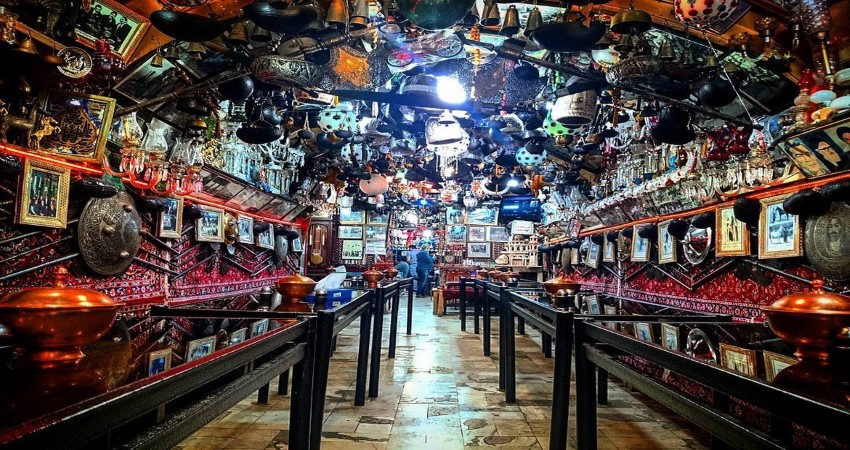Iranian Coffee House

Iranian vegetarian cuisine
October 16, 2020
The daily breads of Iranians
October 16, 2020Iranian Coffee House or Ghahve Khâneh
In the past, there were cafes all over Iran. They fell into two categories: city cafes, which were the most important places for meetings, exchanges, and entertainment, and roadside cafes also called Tchaikhaneh (tea rooms). These were places of rest and relaxation for travelers who stopped on the way.
The first Iranian Coffee House most likely appeared during the reign of Shah Tahmassb the Safavid in Qazvin, the capital of the time, then became widespread under the reign of Shah Abbas the Great in Isfahan. From the second century AH, tea replaced coffee among Iranians, who quickly preferred it to coffee. The ghahveh khâneh developed especially under the reign of the Qadjars, in particular during that of Nâsser-e-din Shah. Thanks to this rapid development, the profession of coffee keeper took full place among the various professional brotherhoods.
What we call today a café is a space with a roof where people, alone or in groups, come to relax while drinking tea, whereas, in the past, the café was not only a place of rest, but also a gathering place where shows, ceremonies, or even thematic evenings devoted to art or poetry were held.
These cafes were the meeting places of poets and mystics of all kinds. In Isfahan, most of the cafes were located on the outskirts of the royal palaces. Over the years, they turned into meeting centers for mystics, artists, poets, as well as the many clan leaders who gathered there to organize conferences or simply to attend various shows. that took place there. Some of the activities organized in the ghahveh khâneh include storytelling, debates, poetic games, chess, backgammon, and dance.
These cafes usually consisted of a large hall, with a large rectangular, shallow basin in the middle. These basins were constructed so that water would continuously flow into them without stagnating. around these pools were placed sofas one meter high on which clients sat. There was a great distance between the pool and the couches, and it was in this empty space that the dances or the plays were organized.
It was during the Safavid reign that in the ghahveh khâneh, tea replaced coffee. Tea made its entry into Persia thanks to merchants from the Far East who imported it. As soon as it was discovered by the Iranians, it was so successful that it quickly replaced coffee.
The pipe and hookah entered Iran through Turkey. It seems that tobacco entered Persia a century after its discovery by the pioneers of the New World. It was Shah Sâfi, Safavid king, who began to smoke tobacco. Subsequently, the hookah and the pipe gradually became the inseparable companions of tea and coffee.
Storytelling narratives (naghâlî) were reserved for evenings marked by an influx of customers. The storyteller told stories drawn from mythology or taken from great literary texts. Most of the speakers in these cafes also spoke on religious or mystical themes, and sometimes the topic discussed was so interesting that the debate continued until morning.

